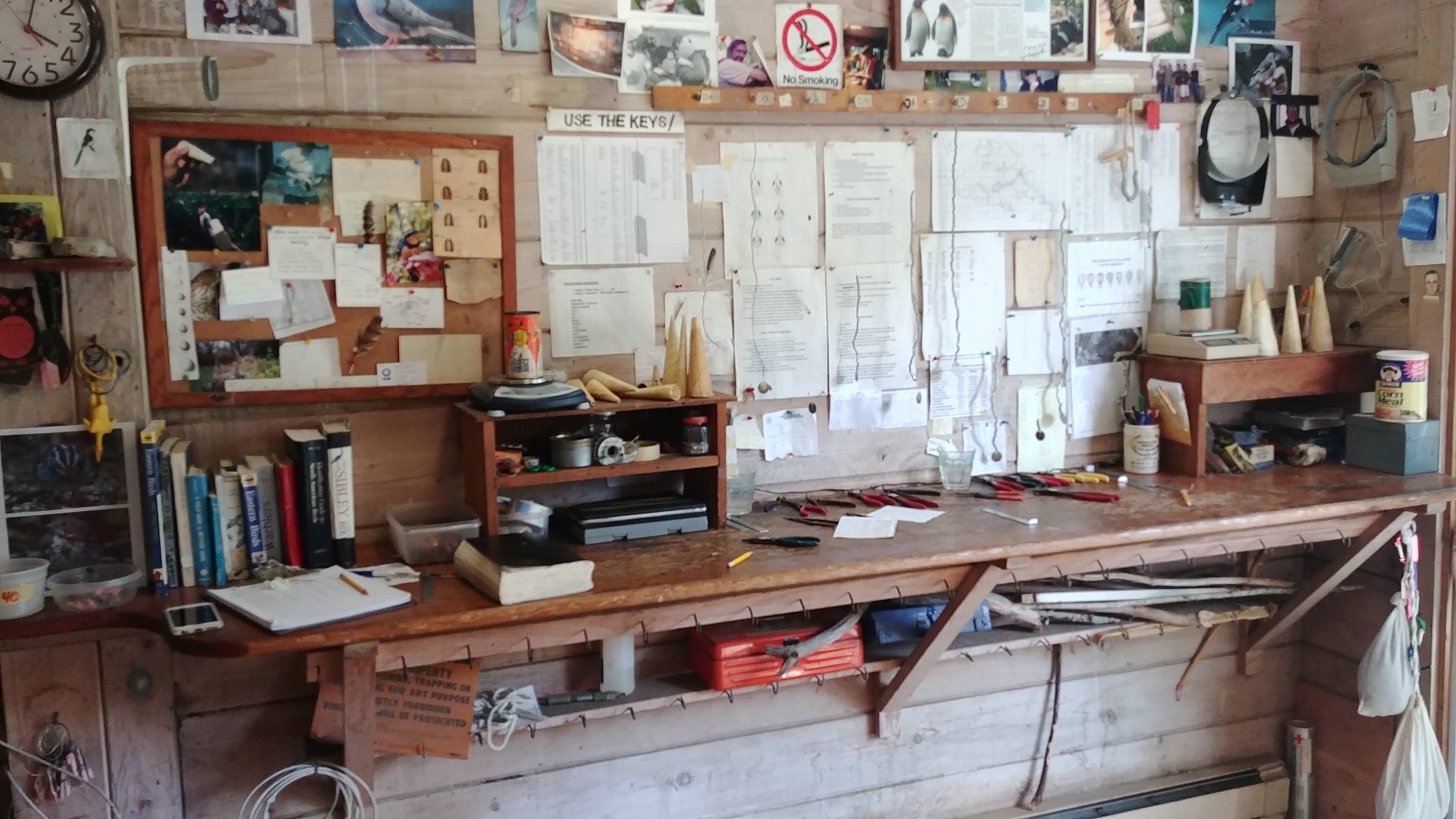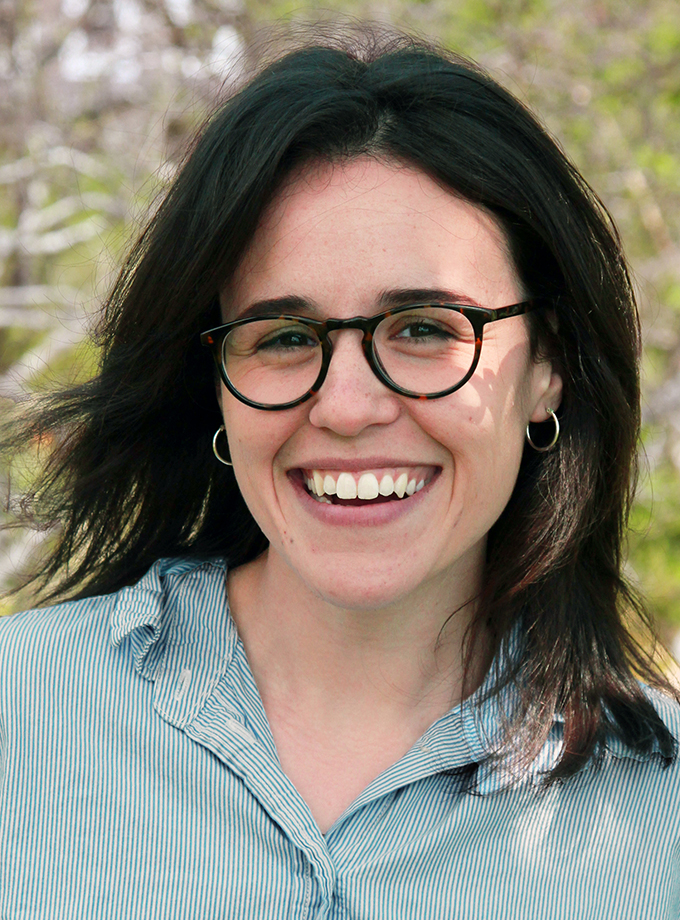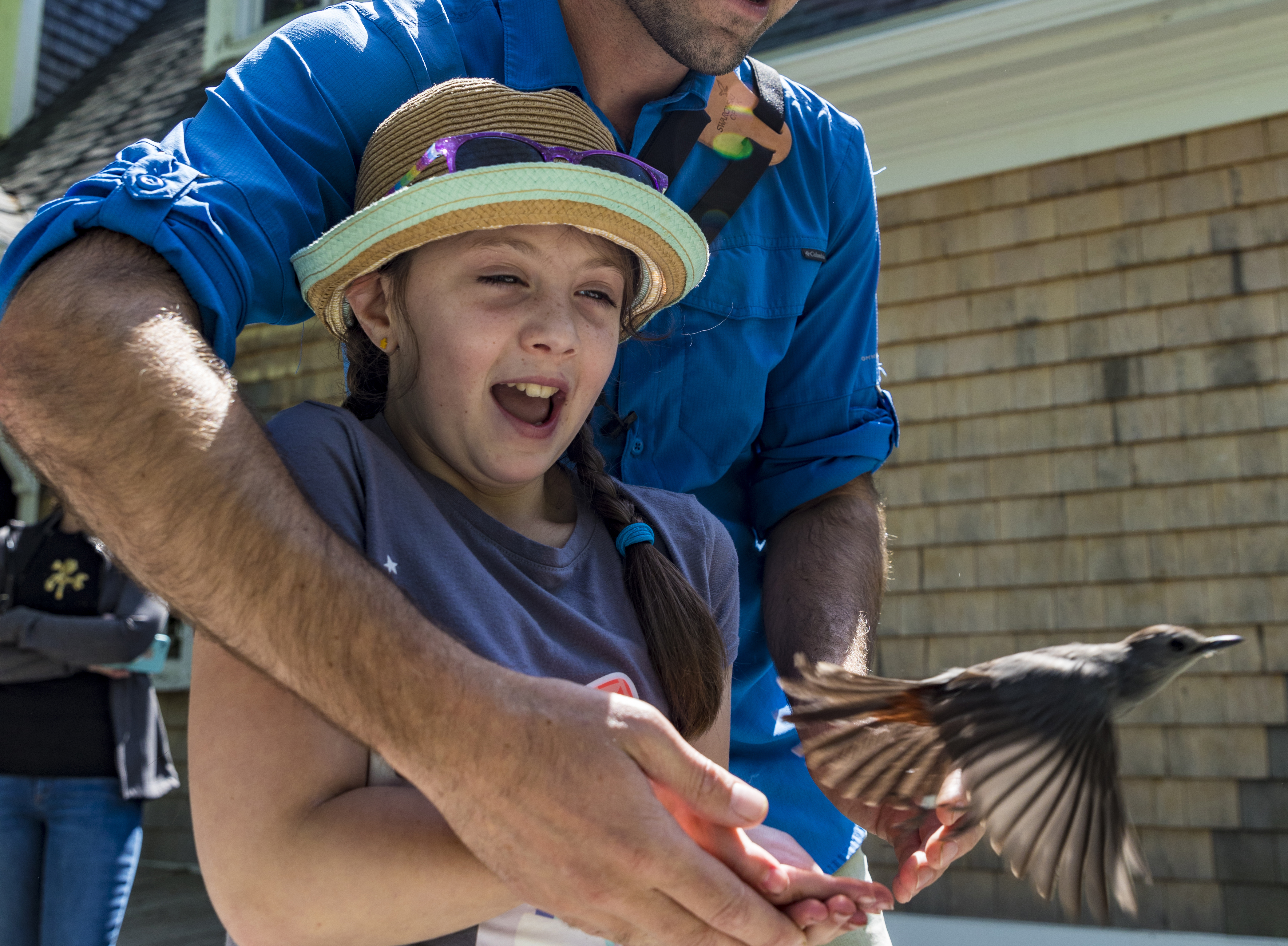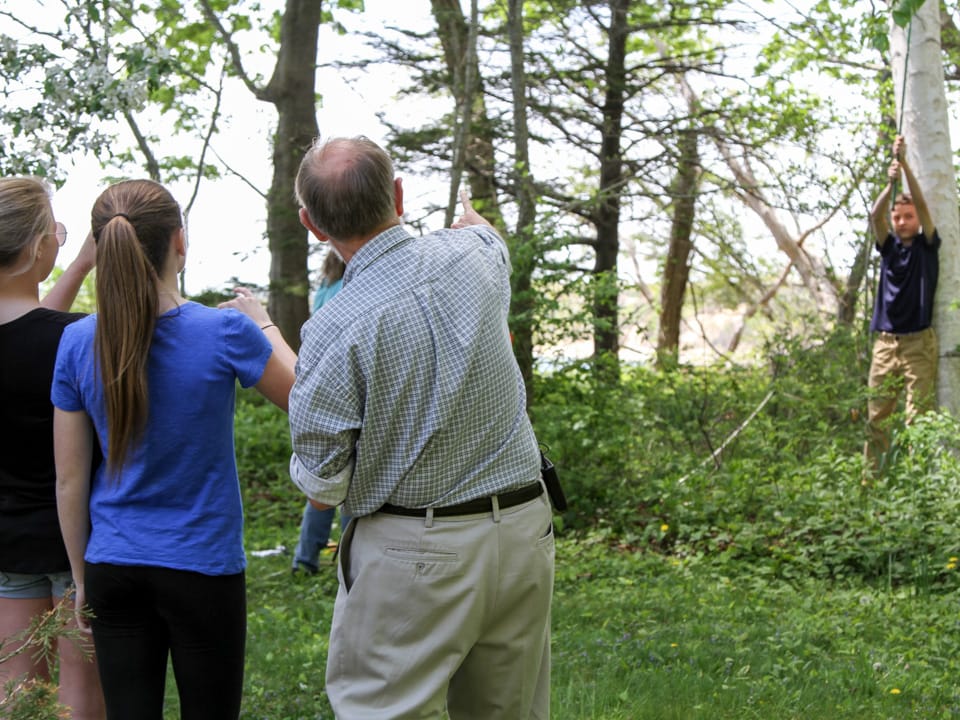Manomet’s bird banding program has been in operation for over 50 years, cycling through banders, interns, and volunteers twice a year in the spring and fall. Taking place during peak songbird migration (April 15th – June 15th, August 15th – November 15th), the banding seasons elicit unbridled excitement, curiosity, frustration, and the most intense sense of community.
The sheer number of interns (and birds) who’ve have passed through the banding lab is truly astounding. Starting in 1972, Trevor has trained thousands of young professionals, many of whom have moved into impressive positions in academic and federal research positions. I’ve been lucky enough to encounter a few returning interns, both young and old, visiting “just for one or two net runs.” The look on a banding veteran’s face when they walk into the lab for the first time in years is priceless. Huge smiles, laughs, hugs, and “oh, yeahs!” as they peruse the walls and desks, observe the processing of a titmouse, or get nailed with a quiz from Trevor himself. Returning to the lab after being away for a spell is like walking into the family room of your childhood home. It returns to life, speaks to your memories, like time has stood still since you left. Not much has changed here in the last 50 years–except the advancement of research.
My first season as a bander was nothing short of a whirlwind—impromptu lectures from director Trevor Lloyd-Evans; bottomless cups of coffee served in the ever-changing cycle of favorite mugs; a wildly vast spectrum of children visiting from area schools; and the extensive cast of volunteers and regular visitors—Jerry on Mondays, Pat with Babybel cheese and crosswords on Fridays. All of this while learning a crazy amount of detailed information on birds—you name it, I (sort of) memorized it: migration timelines, population dynamics, molt patterns, the cloacal protuberance scale, what to do if you’ve got a bird with a nasty skin infection (don’t panic, but don’t touch anything until you’ve scrubbed your hands for ten minutes), and much more.
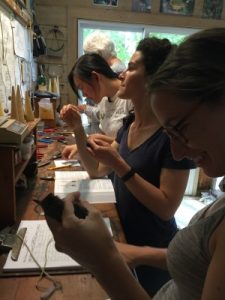 Returning in fall 2016 reintroduced all of the above after a dreadfully slow two month hiatus between seasons. Sarah Groendyk and I returned as veteran interns, and strolled onto the scene like absolute pros…of course, we made just as many if not more mistakes the second go-round as the first. Our fingers had become slender and nimble from hundreds of net extractions, our eyes keen and precise in identifying molt limits and skull development, our voices boisterous yet stern in leading tours and talks for children and adults. Completing two seasons in the lab, I began to feel like part of the legacy; like I’d been engraved onto the lab’s hugely extensive family tree.
Returning in fall 2016 reintroduced all of the above after a dreadfully slow two month hiatus between seasons. Sarah Groendyk and I returned as veteran interns, and strolled onto the scene like absolute pros…of course, we made just as many if not more mistakes the second go-round as the first. Our fingers had become slender and nimble from hundreds of net extractions, our eyes keen and precise in identifying molt limits and skull development, our voices boisterous yet stern in leading tours and talks for children and adults. Completing two seasons in the lab, I began to feel like part of the legacy; like I’d been engraved onto the lab’s hugely extensive family tree.
With eyes still glued shut from deep sleep, we lug our aching bodies out from the toasty sheets and blankets in our dorm at Manomet HQ. Then in unison, as if on an automated loop, we prepare for the day ahead: long johns, t-shirts, field pants, fleeces, socks (don’t forget to tuck your pants into them), boots. Eyes slowly opening, we tumble down the stairs, down the hall, and into the lab—4:58 a.m.—two minutes to spare, high fives! After checking the net run lineup to note our individually assigned directions, we grab our bird bags and sticks and throw ourselves into the morning air’s frosty sting. Quickly though, our grogginess switches over to involuntary smiles, wide eyes, and eruptive humming and whistling as we rush down each of the four splits across 40 acres of net lanes. We hastily throw all 50 mist nets open (weather permitting) in the hopes of finally catching that Yellow-billed Cuckoo, Red-breasted Nuthatch, or even Black-capped Chickadee #2750-73737 for the 20th time this season. Nothing spreads a goofier smile over my face than looking forward to a 12-hour workday in the banding lab… no kidding!
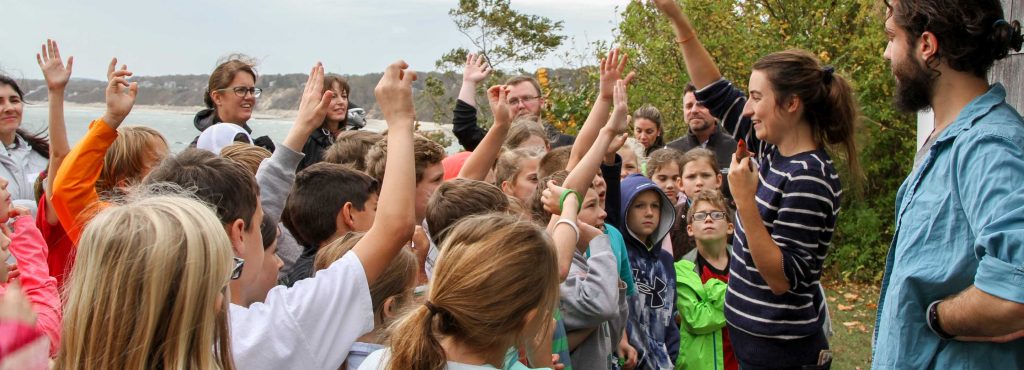





 Back to all
Back to all